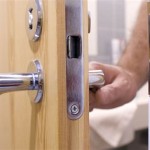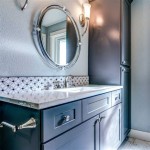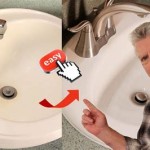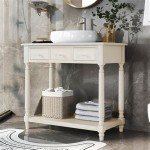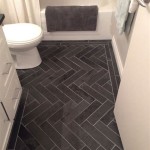How High Should Bathroom Mirror Be? A Comprehensive Guide
Determining the optimal height for a bathroom mirror is a critical design decision that impacts both functionality and aesthetics. A well-placed mirror enhances the usability of the space, contributing to daily routines such as shaving, applying makeup, and checking one's appearance. Furthermore, the position of the mirror can significantly influence the perceived size and light levels of the bathroom. This article provides a comprehensive guide to determining the ideal height for bathroom mirrors, taking into account various factors and considerations.
While seemingly a straightforward element, the mirror's placement requires careful planning based on factors such as the height of the primary users, the style of the vanity, and the overall design of the bathroom. A mirror that is too high or too low can be uncomfortable to use, leading to a less-than-ideal bathroom experience. Therefore, understanding the principles behind mirror height placement is essential for achieving a functional and visually appealing bathroom space.
Understanding the Standard Height Guidelines
While individual needs and preferences play a significant role, adhering to general guidelines provides a solid foundation for determining the appropriate mirror height. The universally accepted standard is to position the center of the mirror at approximately eye level. This ensures that most users can comfortably see their reflection without straining or bending. For adults, this typically translates to a mirror center point between 60 and 65 inches from the floor.
When installing a mirror above a vanity, a common practice is to leave a space of about 5 to 10 inches between the top of the vanity and the bottom of the mirror. This gap allows for easy cleaning of the vanity surface and prevents water splashes from directly impacting the mirror, potentially causing water damage or streaking. This spacing also contributes to a visually balanced aesthetic, creating a sense of harmony between the vanity and the mirror.
It's important to remember that these are just guidelines. Actual dimensions can be modified based on specific circumstances. For instance, in a bathroom used primarily by children, a slightly lower placement may be necessary. Similarly, in a bathroom with particularly tall users, a higher placement will be more appropriate. Flexibility and adaptability are crucial when applying these standards to real-world scenarios.
Accounting for User Height and Special Needs
The most crucial factor in determining the ideal bathroom mirror height is the height of the primary users. A bathroom designed for a family with varying heights will require a different approach than a bathroom designed for a single individual. In situations where there is a significant height difference between users, compromise is necessary. Aim for a height that allows the shorter user to see adequately without being overly awkward for the taller user.
One viable option for accommodating varying heights is to install multiple mirrors. This allows each user to have a mirror positioned at their optimal height. Alternatively, a tilting mirror can be considered. These mirrors can be adjusted to different angles, accommodating a wider range of heights. However, tilting mirrors may not be suitable for all bathroom styles or user preferences.
Consideration should also be given to individuals with disabilities or special needs. Wheelchair users, for example, will require mirrors that are positioned lower to allow for comfortable viewing from a seated position. The Americans with Disabilities Act (ADA) provides specific guidelines for mirror height in accessible bathrooms. These guidelines typically mandate that the bottom edge of the reflecting surface be no higher than 40 inches above the finished floor. Consulting these ADA guidelines is essential when designing a bathroom for users with disabilities.
Considering Vanity Style and Mirror Type
The style and height of the vanity significantly influence the ideal mirror height. A taller vanity, for example, will naturally require a higher mirror placement to maintain a balanced visual aesthetic and to ensure sufficient headroom between the vanity and the mirror. Conversely, a shorter vanity may require a lower mirror placement.
The type of mirror also plays a role. A framed mirror, for example, will have different dimensions than a frameless mirror. The frame itself affects the overall height and width of the mirror, impacting its perceived size and visual weight. Therefore, the dimensions of the frame should be taken into account when determining the optimal placement.
Furthermore, the shape of the mirror can influence its placement. A tall, vertical mirror will create a different visual effect than a wide, horizontal mirror. Vertical mirrors tend to elongate the space, making the ceiling appear higher, while horizontal mirrors tend to visually widen the space. The shape of the mirror should complement the overall design of the bathroom and contribute to the desired aesthetic effect. For example, if a bathroom is small, a larger mirror can give the illusion of greater space. Consider the overall design and the impact each mirror type has when determining where it should fall on the wall.
Installation Considerations: Structural Elements and Lighting
Prior to installing the mirror, it is essential to carefully inspect the wall for any structural elements, such as studs, pipes, or electrical wiring. These elements can impede the installation process and may require adjustments to the planned mirror placement. Using a stud finder is crucial for identifying the location of studs within the wall. Mounting the mirror to studs provides a secure and stable installation, preventing the mirror from shifting or falling. If studs are not located in the desired area for mounting, consider using wall anchors to provide additional support.
The placement of lighting fixtures also plays a crucial role in determining the ideal mirror height. Lighting should be positioned to illuminate the face evenly, minimizing shadows and creating a flattering reflection. Sconce lighting placed on either side of the mirror is generally considered the most effective lighting solution for bathrooms. Overhead lighting, such as recessed lights or pendant lights, can also be used to supplement the sconce lighting. When planning the mirror placement, consider the height and location of the lighting fixtures to ensure optimal illumination.
Furthermore, consider the potential for glare and reflections from other light sources. Windows, for example, can create unwanted glare on the mirror surface, making it difficult to see clearly. Positioning the mirror away from direct sunlight can help to minimize glare. Similarly, consider the reflection of other objects in the bathroom, such as toilet bowls or shower curtains. The goal is to create a clean and unobstructed reflection that enhances the functionality and aesthetics of the space.
Special Cases: Double Vanities and Powder Rooms
Bathrooms with double vanities require a different approach to mirror placement. Typically, the options are to install two individual mirrors, one above each vanity, or to install a single, large mirror that spans the entire length of the vanity. The choice depends on personal preference, the size of the bathroom, and the overall design aesthetic.
If opting for two individual mirrors, ensure that they are positioned at the same height and spacing to create a symmetrical and balanced look. The width of each mirror should be proportional to the width of the vanity beneath it. Overly small or overly large mirrors can disrupt the visual harmony of the space. It is best to measure and mark the placements prior to hanging. This can ensure a balanced look for the double vanity.
In powder rooms, which are typically smaller than full bathrooms, the mirror serves a more decorative function. While functionality is still important, the overall aesthetic impact is often prioritized. Smaller, more ornate mirrors are often used in powder rooms to add a touch of elegance and sophistication. Consider the size and style of the powder room when selecting a mirror and determining its placement. In smaller areas, having an oversized mirror can help to create a more visually appealing and larger looking space.
In conclusion, determining the ideal height for a bathroom mirror is a multifaceted process that requires careful consideration of various factors. By adhering to standard guidelines, accounting for user height and special needs, considering vanity style and mirror type, and addressing installation considerations, it is possible to achieve a functional and visually appealing bathroom space. These considerations will help to ensure the mirror serves its purpose while also being a visually appealing design addition to the space. A well-placed mirror will enhance the daily routines and contribute to the overall enjoyment of the bathroom environment.

Bathroom Mirror Size Calculator
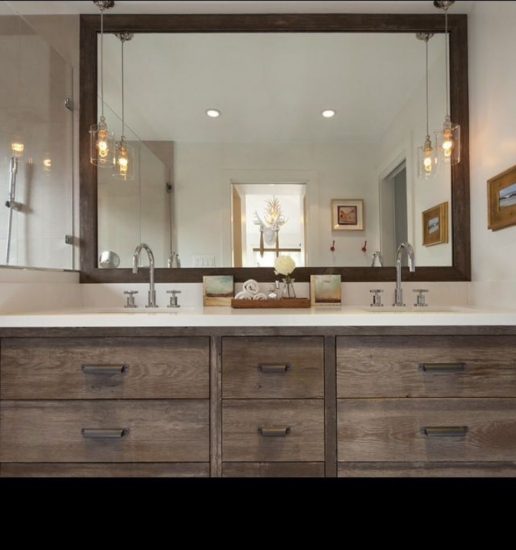
How High To Hang A Vanity Mirror Sparrow Stoll

How To Hang A Wash Basin Mirror Step By Guide Accent

How High Should The Bathroom Medicine Cabinet Be Hung Wellfor

How High To Hang A Vanity Mirror Sparrow Stoll

Mirror Size In A 10 Ceiling Bathroom

How To Choose The Best Size Mirror Olde Good Things

How High Should You Hang Your Medicine Cabinet Wellfor

How High To Hang A Vanity Mirror Sparrow Stoll

How High To Hang A Bathroom Mirror Wellfor
